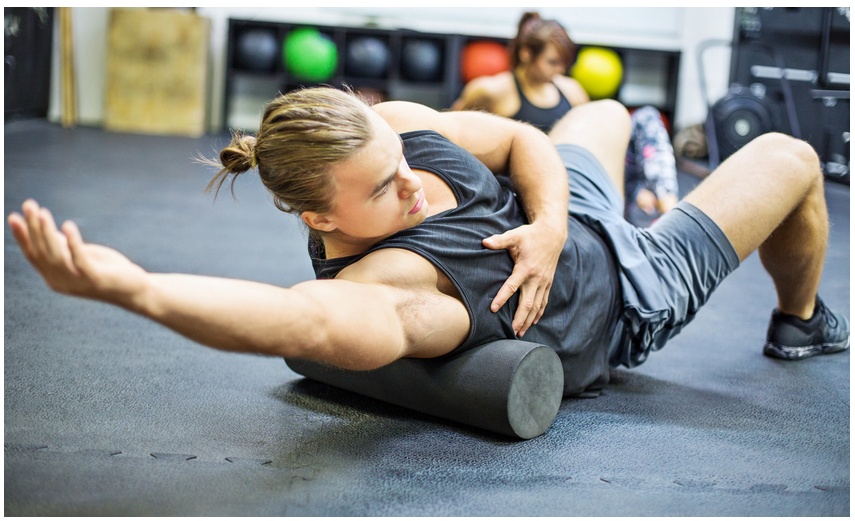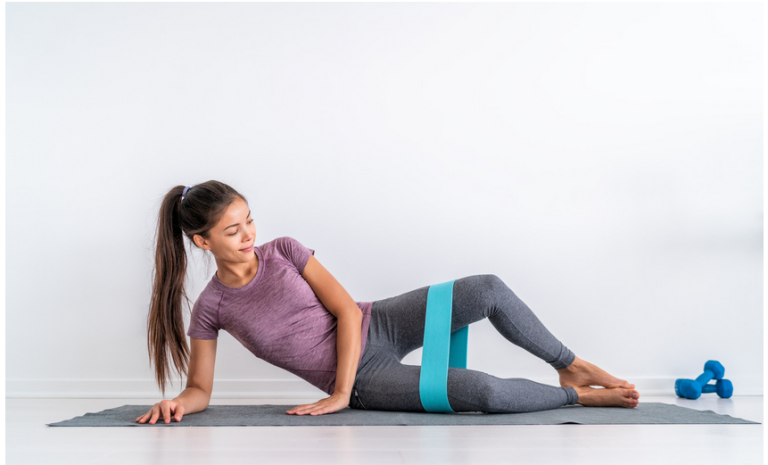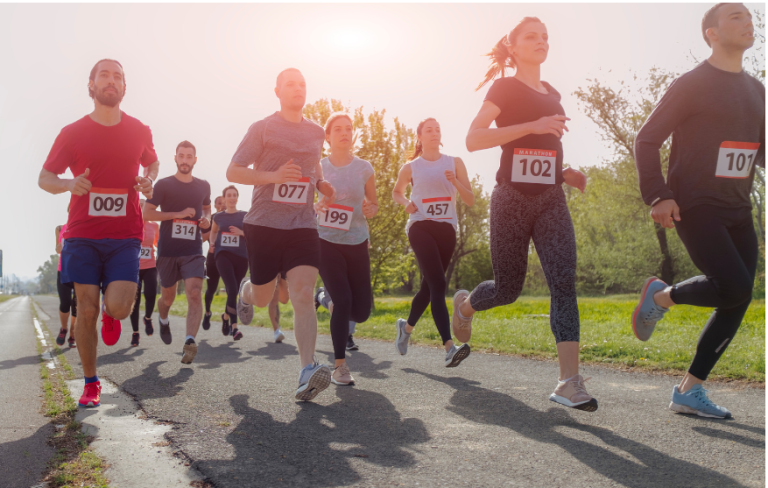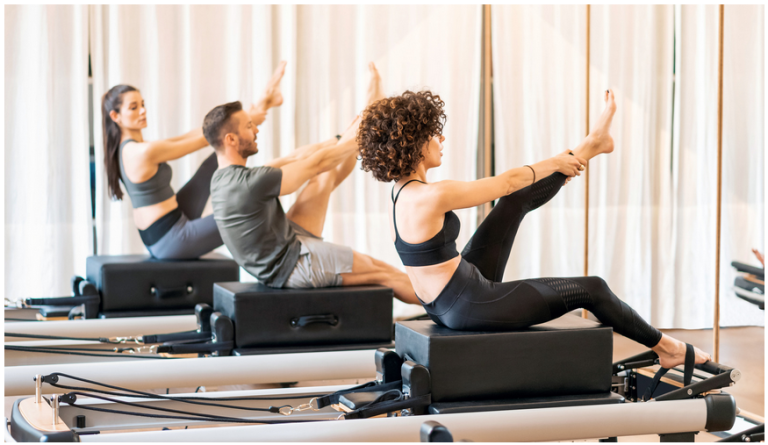
Foam Roller vs Stretching: Which is Better for Muscle Recovery?

Foam rollers and stretching are two popular techniques used by athletes, fitness enthusiasts, and individuals looking to improve their flexibility, mobility, and overall well-being. While both methods involve manipulating the muscles and soft tissues of the body, they differ in their approach and intended benefits. This article will explore the similarities and differences between foam rolling and stretching, their comparative benefits, and practical applications.
Understanding Foam Rolling and Stretching Foam rolling is a self-myofascial release technique that involves using a cylindrical foam roller to apply pressure to specific areas of the body to release tension and improve flexibility. Foam rolling aims to target trigger points or knots in the muscles and fascia, which can cause pain, stiffness, and limited range of motion. On the other hand, stretching involves elongating the muscles and tendons to improve flexibility, reduce muscle soreness, and prevent injury. Stretching can be performed in various ways, including static stretching, dynamic stretching, and proprioceptive neuromuscular facilitation (PNF) stretching.

Comparative Benefits Both foam rolling and stretching have been shown to have benefits for physical performance, flexibility, and recovery. Foam rolling has been found to improve flexibility, range of motion, and muscle soreness and reduce the risk of injury. Stretching has also been shown to improve flexibility, reduce muscle soreness, and enhance athletic performance, particularly when performed before exercise.
Key Takeaways
- Foam rolling and stretching are popular techniques to improve flexibility, mobility, and overall well-being.
- Foam rolling involves using a cylindrical foam roller to apply pressure to specific body areas to release tension and improve flexibility, while stretching involves elongating the muscles and tendons to improve flexibility, reduce muscle soreness, and prevent injury.
- Both foam rolling and stretching have been shown to benefit physical performance, flexibility, and recovery.
Understanding Foam Rolling and Stretching
Foam rolling and stretching are popular techniques to improve flexibility, reduce muscle soreness, and prevent injury. This section will provide an overview of foam rolling and stretching, including their definitions, types, and techniques.
Definition and Types of Foam Rolling
Foam rolling is a form of self-massage that involves using a foam roller to apply pressure to specific body areas. The pressure helps release tension in the muscles and fascia, improving flexibility and reducing soreness. There are several types of foam rollers available, including:
- Standard foam roller: This is the most common type of foam roller. It is made of high-density foam and is ideal for beginners.
- Textured foam roller: This type of foam roller has a textured surface that provides a deeper massage and is ideal for more advanced users.
- Vibrating foam roller: This type of foam roller vibrates, which can help to loosen tight muscles further.
Overview of Stretching Techniques
Stretching is a technique that improves flexibility and range of motion in the muscles and joints. There are two main types of stretching: static and dynamic.
- Static stretching involves holding a stretch for some time, usually between 15 and 60 seconds. Static stretching is ideal for improving flexibility and reducing muscle soreness.
- Dynamic stretching involves moving the muscles and joints through a full range of motion. Dynamic stretching is ideal for warming up before exercise and improving athletic performance.
There are several techniques used in stretching, including:
- Active stretching: This involves using your muscles to hold a stretch.
- Passive stretching involves using an external force, such as a partner or a stretching device, to hold a stretch.
- PNF stretching involves contracting and relaxing the muscles while stretching to improve flexibility.
In conclusion, foam rolling and stretching improve flexibility, reduce muscle soreness, and prevent injury. By understanding the different types and techniques of foam rolling and stretching, we can choose the best approach for our needs.
Comparative Benefits
Regarding improving flexibility, reducing muscle soreness, and preventing injuries, foam rolling and stretching have their unique benefits. In this section, we will compare the benefits of foam rolling and stretching to help you decide which one to incorporate into your fitness routine.
Benefits of Foam Rolling
Foam rolling is a form of self-myofascial release that involves using a foam roller to apply pressure to different body areas. Here are some benefits of foam rolling:
- Alleviates muscle tension: Foam rolling helps alleviate tension in the muscle tissue, which can help release scar tissue, fascia, or trigger points. This, in turn, can help soften the tissue and improve flexibility.
- Improves circulation: Foam rolling can help improve blood and oxygen circulation, speeding up muscle recovery and reducing muscle soreness.
- Increases range of motion: By breaking down adhesions and knots in the muscle tissue, foam rolling can help increase your range of motion and flexibility.
Benefits of Stretching
Stretching is a form of exercise that involves elongating the muscle fibers to improve flexibility and range of motion. Here are some benefits of stretching:
- Improves flexibility: Stretching helps to lengthen the muscles and improve flexibility, reducing the risk of injury and improving performance.
- Reduces muscle soreness: Stretching can help reduce muscle soreness and stiffness by increasing blood flow to the muscles and flushing out lactic acid.
- Improves posture: Stretching can help improve your posture by lengthening tight muscles that pull the body out of alignment.
In summary, foam rolling and stretching offer unique benefits that can help improve flexibility, reduce muscle soreness, and prevent injuries. Incorporating both into your fitness routine can provide optimal results.
Effects on Performance and Flexibility
Foam rolling and stretching are two common techniques for improving physical performance and flexibility. Both techniques have benefits and drawbacks, and the choice between them depends on the individual’s needs and goals.
Foam Rolling on Performance Parameters
Foam rolling is a self-massage technique that uses a foam roller to apply pressure to specific muscles to release tension and improve flexibility. According to a systematic review and meta-analysis [1], foam rolling can have significantly favorable effects on performance when compared to static stretching, especially when applied to some muscles (e.g., quadriceps) or some tasks (e.g., strength), when applied for longer than 60 s, or when the foam rolling included vibration.
According to a randomized controlled trial, foam rolling has also been more effective than static and dynamic stretching in acutely increasing the flexibility of the quadriceps and hamstrings without hampering muscle strength [2].
Stretching on Performance and Flexibility
Stretching is a technique that involves elongating muscles to improve flexibility and range of motion. Stretching has been shown to positively affect performance and flexibility, although the magnitude of these effects varies depending on the type of stretching and the muscle groups involved.
A meta-analysis [3] found that static stretching had a small but significant positive effect on overall performance (+2.7%) and flexibility (+5.0%). In comparison, dynamic stretching had a small but significant positive effect on overall performance (+2.0%) but not on flexibility. However, the differences in the effects between foam rolling and static stretching were not of practical relevance.
In summary, foam rolling and stretching can positively affect performance and flexibility. Foam rolling may be more effective than stretching in some cases, such as when applied for longer durations or when targeting specific muscle groups. However, stretching can also be an effective way to improve flexibility and range of motion. The choice between the two techniques ultimately depends on the individual’s needs and goals.
Practical Applications

Foam Roller Exercises
Foam rolling is a popular technique to increase the range of motion and flexibility, reduce muscle soreness, and improve overall performance. It is recommended to perform foam roller exercises before or after a workout. Foam rolling can target specific muscles or muscle groups, such as the quadriceps, hamstrings, calves, and back muscles.
When performing foam roller exercises, it is important to use slow and controlled movements, focusing on areas of tightness or discomfort. It is also recommended to hold each position for 30-60 seconds or until the muscle tension is released. Some popular foam roller exercises include:
- Quadriceps Roll: Place the foam roller under the front of your thigh and roll up and down from the hip to the knee.
- Hamstring Roll: Place the foam roller under the back of your thigh and roll up and down from the hip to the knee.
- Calf Roll: Place the foam roller under your calf and roll up and down from the ankle to the knee.
- Upper Back Roll: Lie on your back with the foam roller under your shoulder blades and roll up and down from the middle of your back to the top of your shoulders.
Stretching Exercise Protocols
Stretching is another popular technique to improve flexibility and range of motion, reduce muscle soreness, and prevent injury. There are two main types of stretching exercises: static and dynamic.
Static stretches involve holding a stretch position for a prolonged period, usually 30-60 seconds. These stretches typically stretch a muscle to its maximum length and improve flexibility. Some common static stretches include:
- Hamstring Stretch: Sit on the ground with your legs straight out in front of you. Reach forward and try to touch your toes, keeping your knees straight.
- Quadriceps Stretch: Stand on one leg and bring your other heel towards your buttocks. Hold onto your ankle with your hand and pull your heel towards your buttocks.
- Chest Stretch: Stand with your arms out to the side, parallel to the ground. Bring your arms backward, squeezing your shoulder blades together.
Dynamic stretches involve moving a joint through its full range of motion, typically controlled and repetitive. These stretches typically warm the muscles and prepare them for exercise. Some common dynamic stretches include:
- Walking Lunges: Take a large step forward and bend your front knee until it is at a 90-degree angle. Keep your back leg straight and repeat on the other side.
- Leg Swings: Stand next to a wall and swing your leg back and forth, keeping your knee straight. Repeat on the other side.
- Arm Circles: Stand with your arms out to the side and make small circles with your arms, gradually increasing the size of the circles.
In conclusion, foam rolling and stretching exercises can improve flexibility and range of motion and reduce muscle soreness. It is recommended to use a combination of static and dynamic stretching exercises and foam roller exercises to achieve optimal results.
Order and Combination of Techniques
Foam rolling and stretching are both effective techniques to help improve mobility, reduce muscle soreness, and prevent injury. However, the question arises: Should you stretch or foam roll first?
Should You Stretch or Foam Roll First?
The answer to this question depends on your goals and the type of activity you are preparing for. If you want to improve your mobility and range of motion, it is recommended to stretch first. Stretching helps to elongate the muscle fibers and increase blood flow to the muscles, which can help improve flexibility.
On the other hand, foam rolling should be done first if you want to reduce muscle soreness and improve recovery. Foam rolling helps to break up adhesions and knots in the muscles, which can help reduce muscle soreness and improve recovery time.
Combining Foam Rolling with Stretching
Combining foam rolling with stretching can be an effective way to improve mobility and reduce muscle soreness. When used together, the greatest range of motion gains occur since foam rolling helps relax and loosen the fascia, while a static stretch elongates the muscle fibers and holds them at their end range for a prolonged period.
It is important to note that stretching and foam rolling should be done in a specific order. First, foam roll the targeted muscle group for 1-2 minutes, then perform a static stretch for 30 seconds. Repeat this process 2-3 times before moving on to the next muscle group.
Combined with Sport-Specific Post Stretching
It is also important to incorporate sport-specific post-stretching after foam rolling and stretching. This can help improve performance and prevent injury by preparing the muscles for the specific movements required in your activity. For example, if you are a runner, incorporating post-stretching exercises that mimic running movements can help improve your performance and prevent injury.
In conclusion, foam rolling and stretching improve mobility, reduce muscle soreness, and prevent injury. The order and combination of these techniques depend on your goals and the activity you are preparing for. Following the recommended order and incorporating sport-specific post-stretching can improve your performance and reduce the risk of injury.
Scientific Insights and Controversies

Systematic Reviews and Studies
We have investigated the effects of foam rolling and stretching on physical performance and recovery by reviewing several systematic reviews and meta-analyses. A recent systematic review and meta-analysis found that foam rolling had significantly favorable effects on performance compared to static stretching, especially when applied for longer than 60 seconds or when the foam rolling included vibration (PubMed Central).
Another meta-analysis compared the combined effects of foam rolling and stretching with the effects of stretching or foam rolling alone. The meta-analysis revealed a significant overall effect on the combined treatment’s range of motion (ROM) compared to no intervention (PubMed Central).
However, a systematic review found no significant difference between foam rolling and stretching compared to other warm-up activities that enhance muscle and body temperature without finding significant difference (ScienceDirect).
Debating Foam Rolling Efficacy
The efficacy of foam rolling is a controversial topic in the fitness industry. Some experts argue that foam rolling can improve flexibility and range of motion and reduce muscle soreness, while others claim that the benefits are negligible.
One study found that the effects of foam rolling on performance and recovery are minor and partly negligible but can be relevant in some cases (e.g., to increase sprint performance and flexibility or to reduce muscle pain sensation) (PubMed Central).
Overall, the scientific evidence on the efficacy of foam rolling is mixed, and more research is needed to determine the optimal use of foam rolling in athletic training and rehabilitation.
Comparative Analysis
When it comes to improving physical performance, there are several methods to choose from, including foam rolling and stretching. In this section, we will compare the outcomes of foam rolling and stretching, as well as foam rolling and massage guns.
Foam Rolling vs Stretching Outcomes
Foam rolling and stretching have been shown to have different outcomes on physical performance. According to a systematic review and meta-analysis, foam rolling has significantly favorable effects on performance when compared to static stretching, especially when applied to some muscles (e.g., quadriceps) or some tasks (e.g., strength) for longer than 60 seconds [1]. However, another study found that stretching is more effective than foam rolling in improving the range of motion [2].
Foam Rolling vs Massage Gun
Foam rolling and massage gun are both methods of self-myofascial release that can help improve physical performance. However, they have some key differences. Foam rolling is a more affordable and widely available option that can be done at home, while massage guns are more expensive and may require professional assistance. Additionally, foam rolling is more effective for larger muscle groups, while massage guns are better for smaller muscle groups and hard-to-reach areas.
In terms of effectiveness, a study comparing the acute effects of foam rolling, vibration foam rolling, and massage guns found that all three methods were equally effective in improving flexibility and range of motion [3]. However, it’s important to note that this study only looked at acute effects and did not assess long-term outcomes.
Overall, both foam rolling and stretching have unique benefits and drawbacks, and the choice between them will depend on individual needs and preferences. Similarly, the choice between foam rolling and massage guns will depend on factors such as budget, muscle group being targeted, and personal preference.
Community Perspectives

Reddit Discussions on Foam Rolling vs Stretching
We scoured Reddit to see what people had to say about foam rolling vs stretching. While there were varying opinions, many users agreed that foam rolling and stretching serve different purposes and can both be beneficial in their ways. Some users suggested that foam rolling is better for targeting specific muscle groups and relieving muscle soreness while stretching improves overall flexibility and prevents injury.
One user on the r/fitness subreddit shared their personal experience, stating that they prefer to foam roll before their workout and stretch afterward. They claimed that foam rolling helps them warm up and prepare their muscles for exercise, while stretching afterward helps them cool down and prevent injury.
Another user on the r/running subreddit suggested that foam rolling and stretching can both be helpful for runners, but it ultimately depends on the individual’s needs and preferences. They recommended experimenting with both methods to see what works best for each individual.
Professional Athletes and Trainers’ Views
Professional athletes and trainers generally have a more nuanced view of foam rolling vs stretching. While some athletes and trainers swear by foam rolling to improve performance and prevent injury, others believe stretching is more effective.
In an interview with Runner’s World, physical therapist and running coach Chris Johnson stated that foam rolling is a great tool for self-massage and can help relieve muscle soreness, but it should not be used as a substitute for stretching. He recommended using foam rolling with stretching and other mobility work for maximum benefit.
On the other hand, some athletes and trainers believe that stretching is overrated and that foam rolling is a more effective way to improve mobility and prevent injury. In an interview with Men’s Health, fitness expert and personal trainer Tony Gentilcore claimed that foam rolling is more effective than stretching because it can help break up adhesions and tight spots in the muscles.
Overall, foam rolling and stretching have their place in a well-rounded fitness routine. While some may prefer one method over another, it’s important to experiment with both and find what works best for each individual.
FAQs: About Foam Roller vs Stretching
How does passive muscle stretching impact rapid force production and neuromuscular function in human plantar flexors?
Passive muscle stretching has been found to harm rapid force production and neuromuscular function in human plantar flexors. A study by Trajano et al. (2019) concluded that when the plantar flexor muscles are subjected to passive stretching, there is an impairment in the ability to generate force rapidly and a decline in neuromuscular function. These findings highlight the negative impact of passive muscle stretching on the plantar flexor muscles’ performance capabilities, particularly in speed and neuromuscular coordination.
How do gastrocnemius/soleus self-myofascial release and dynamic stretching compare regarding closed-chain dorsiflexion?
The study investigated the acute effects of gastrocnemius/soleus self-myofascial release compared to dynamic stretching on closed-chain dorsiflexion. The results of the research, as summarized in “A Comparison of the Effects of Foam Rolling and Stretching on Physical Performance: A Systematic Review and Meta-Analysis,” provide insights into the differences in effectiveness between these two techniques for improving closed-chain dorsiflexion. For a detailed comparison of the effects of the two methods on closed-chain dorsiflexion, the systematic review and meta-analysis presented in the study Frontiers in Physiology (12:720531) can offer valuable insights and findings.
How do dynamic and static stretching within general and activity-specific warm-up protocols affect performance?
According to a study by Samson, M., Button, D. C., Chaouachi, A., and Behm, D. G. (2012), dynamic and static stretching within general and activity-specific warm-up protocols can impact performance. Specifically, the researchers found that the type of stretching included in a warm-up routine can influence subsequent performance outcomes. This suggests that incorporating dynamic or static stretching exercises into warm-up routines may have varying effects on performance levels in sports and physical activities.
What are the acute effects of foam rolling, static stretching, and dynamic stretching during warm-ups on muscular flexibility and strength in young adults?
The study conducted by Su et al. in 2017 aimed to investigate the immediate impacts of foam rolling, static stretching, and dynamic stretching as part of warm-up routines on muscular flexibility and strength in young adults. Published in the Journal of Sport Rehabilitation, the research delved into the effects of these warm-up techniques on the flexibility and strength of muscles in young individuals. The findings detailed in the study provide insights into how foam rolling, static stretching, and dynamic stretching influence muscular flexibility and strength in the acute phase, shedding light on the potential benefits or limitations of these warm-up practices.
What are the benefits of foam rolling compared to traditional stretching?
Foam rolling and stretching are beneficial for improving flexibility, mobility, and muscle recovery. However, foam rolling can more effectively release tight muscles and improve circulation. According to Beachbody on Demand, foam rolling is intended to release and regenerate the fascia and underlying muscles, while stretching improves the range of motion by addressing tissue extensibility.
Can foam rolling effectively loosen tight muscles?
Yes, foam rolling can effectively loosen tight muscles. A study published in the Journal of Athletic Training found that foam rolling can increase the range of motion and decrease muscle soreness after exercise. Additionally, foam rolling can improve circulation and reduce inflammation, which can also help alleviate tightness in muscles.
Should one foam roll before or after a stretching routine?
It is recommended to foam roll before a stretching routine. Foam rolling can help loosen tight muscles and increase blood flow, improving the effectiveness of stretching. Stretching after foam rolling can also help maintain the improved range of motion and prevent muscles from tightening back up.
Is it more beneficial to foam roll or stretch after running?
Both foam rolling and stretching can be beneficial after running. Foam rolling can help release tightness in muscles and improve circulation, while stretching can help improve flexibility and prevent injury. Incorporating foam rolling and stretching into a post-run routine is recommended for maximum benefits.
Does incorporating foam rolling into a workout count as exercise?
Foam rolling alone is not considered exercise but can be incorporated into a workout routine as a form of active recovery. Foam rolling can help improve circulation and reduce muscle soreness, which can help improve overall performance during exercise.
How do foam roller exercises compare to massage guns for muscle recovery?
Foam roller exercises and massage guns aim to improve muscle recovery, but they work in different ways. Foam roller exercises use body weight and pressure to target specific muscles, while massage guns use percussive therapy to target deep tissue. Both methods can effectively reduce muscle soreness and improve circulation, but it ultimately depends on personal preference and individual needs.
References
[3] Foam rolling and stretching do not provide superior acute flexibility benefits



